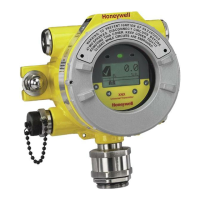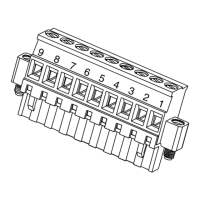Honeywell Process Solutions Wireless Dual Analog Input Interface Transmitter
Rev. 8 User Manual 23
July 2012
6.2: Selecting the Normal
Sampling Rate*
The Normal Sampling Rate is the interval in which the Transmitter reads
the monitored process value. As previously mentioned, the Transmitter is
in “sleep” mode to save power during the operations sequence. This mode
turns off most of the electronics on the unit (with the exception of the
LCD) in order to preserve battery life. The Transmitter will then ‘wake up’
for every Normal Sampling Period and take the necessary process value
readings.
Notice that the minimum speed of the Normal Sampling Rate is dependent
on the Normal Transmission Rate setting selected (see Section 6.1). The
Sampling Rate cannot be set slower than the Normal Sampling Rate. Thus,
if you selected the Normal Transmit Rate setting to be 10 Seconds the
Normal Sampling Rate must be set to 10 seconds or faster. A complete
table of these parameters is shown below.
* Indicates that Menu is Disabled if Wireless Management Toolkit is detected. (See Appendix A)
In order to properly set the Normal Sampling Rate, determine how often
updates are needed from the Transmitter when the process being moni-
tored is operating under normal conditions. The Transmitter has a select-
able range of 1-5, 10, 15, 20, 30, and 60 seconds depending on the Normal
Transmission Rate. The factory default is 1 second. However, the more
frequently the Transmitter wakes up to check the monitored device, the
faster you will use up the battery life of the Transmitter.
Figure 6.3 is an example of what happens when the Normal Sampling Rate
is too slow for the process being monitored. Notice how the rise in the
voltage level falls between two normal samples, and thus goes completely
undetected.
Figure 6.4 is an example of what happens when the Normal Sampling Rate
is correctly set for the device that is being monitored. Notice how this set-
ting makes it possible to sample the rise in the voltage level.
Once you have decided on the proper Normal Sampling Rate select this
setting from the Transmitter or through WMT.
Figure 6.3: Incorrect Sampling Rate
Baud Rate
(communication range)
(fastest speed of updates)
76.8K 19.2K 4.8K
500-750 feet 2000-2500 feet 3000 feet
1 Second 5 Seconds 20 Seconds
Normal and Abnormal
Transmit Rates
1 Second or Greater 5 Seconds or
Greater
20 Seconds or
Greater
Normal and Abnormal
Sampling Rates
Equal to Transmit
Rate or Less
Equal to Transmit
Rate or Less
Equal to Transmit
Rate or Less
Figure 6.4: Correct Sampling Rate
If you have the Wireless Management Toolkit software this menu option
will not be accessible via the Transmitter once the Transmitter detects
that the software is being used (See Appendix A for more details). An
explanation of how to select the Normal Sampling Rate using the Wire-
less Management Toolkit software can be found in section 6.7.
Using Wireless Management Toolkit

